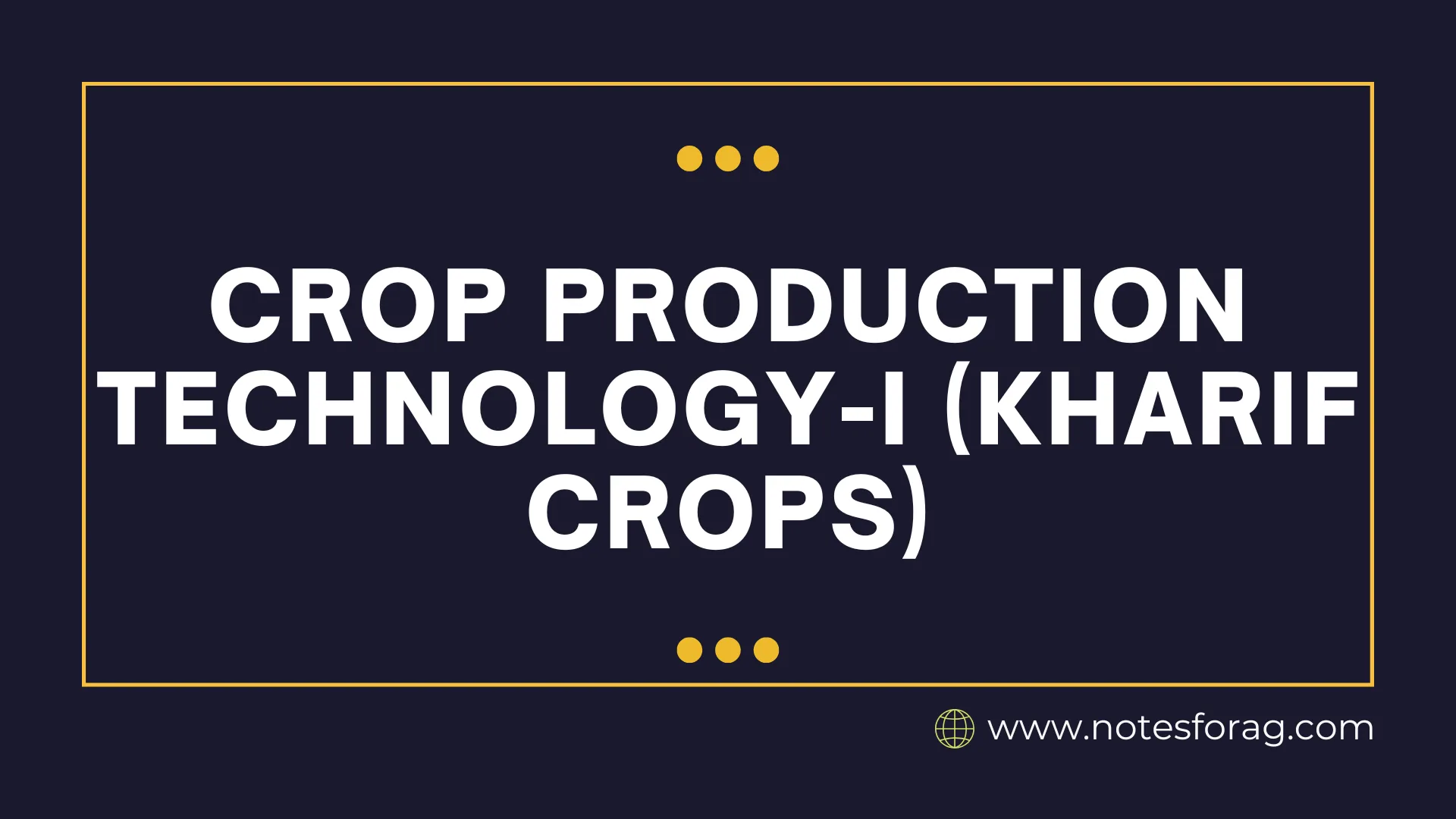Crop Production Technology-I (Kharif Crops) focuses on the scientific principles, practices, and techniques required to cultivate kharif crops, which are typically sown during the onset of the monsoon (June-July) and harvested in the autumn (September-October). This subject aims to enhance understanding of the agronomic practices for major Kharif crops such as rice, maize, sorghum, pearl millet, groundnut, and cotton.
Students gain insights into crop management techniques like land preparation, sowing, irrigation, fertilization, pest and disease control, and harvesting methods tailored for Kharif crops. Emphasis is placed on sustainable and resource-efficient practices that maximize yield while preserving soil health and water resources. This course plays a vital role in equipping learners with the knowledge and skills needed to improve agricultural productivity, ensure food security, and promote sustainable farming practices in rain-fed and irrigated systems.
Table of Contents
Objectives of Crop Production Technology-I
The objectives of Crop Production Technology-I (Kharif Crops) are as follows:
- Enhance Agricultural Productivity: Increase the yield of kharif crops through improved practices and high-yielding varieties.
- Promote Sustainable Farming Practices: Encourage environmentally friendly practices that conserve resources and maintain soil health.
- Improve Soil Fertility and Health: Educate on soil management techniques, including testing and balanced fertilization.
- Optimize Water Management: Promote efficient water use through rainwater harvesting and irrigation techniques.
- Implement Integrated Pest Management (IPM): Train ineffective pest and disease management while minimizing chemical use.
- Facilitate Knowledge Transfer: Provide access to research, technologies, and best practices through extension services and training.
- Enhance Economic Viability: Support informed decision-making regarding crop selection and market access for better profitability.
- Encourage Crop Diversification: Promote the cultivation of various kharif crops to reduce risk and improve food security.
Key Topics of Crop Production Technology-I (Kharif Crops)
Key Topics of Crop Production Technology-I (Kharif Crops) are:
- Introduction to Kharif Crops:
- Definition and characteristics of Kharif crops.
- Importance and economic significance of major Kharif crops.
- Agro-climatic Requirements:
- Climatic factors influencing crop growth (temperature, rainfall, humidity).
- Soil types and their suitability for different Kharif crops.
- Major Kharif Crops:
- Cereals: Rice, maize, sorghum, pearl millet (bajra).
- Pulses: Green gram (moong), black gram (urad), pigeon pea (tur).
- Oilseeds: Groundnut, soybean, sesame.
- Commercial Crops: Cotton, sugarcane, jute.
- Seed and Sowing Practices:
- Selection of high-yielding and disease-resistant varieties.
- Sowing methods (broadcasting, drilling, transplanting).
- Seed treatment and seed rate for each crop.
- Nutrient and Fertilizer Management:
- Nutrient requirements of major Kharif crops (NPK and micronutrients).
- Fertilizer application methods (basal, top dressing, foliar application).
- Water and Irrigation Management:
- Irrigation methods and scheduling based on crop requirements.
- Water conservation techniques like Alternate Wetting and Drying (AWD) and mulching.
- Weed Management:
- Identification of major weeds in Kharif crops.
- Mechanical, chemical, and cultural methods of weed control.
- Pest and Disease Management:
- Common pests (e.g., stem borers, bollworms) and their control measures.
- Major diseases (e.g., rice blast, cotton wilt) and their management.
- Integrated Pest Management (IPM) strategies.
- Farm Mechanization and Technology:
- Use of machinery for land preparation, sowing, weeding, and harvesting.
- Role of precision farming, drones, and remote sensing in crop monitoring.
- Harvesting and Post-Harvest Management:
- Harvesting techniques and timing for optimal yield.
- Threshing, drying, storage, and marketing practices to reduce losses.
- Sustainable and Climate-Resilient Practices:
- Crop rotation, intercropping, and conservation agriculture.
- Use of drought-tolerant and flood-resistant crop varieties.
- Recent Advances and Innovations:
- Biotechnology applications in Kharif crop improvement.
- Use of bio-fertilizers and bio-pesticides for sustainable farming.
Importance of Crop Production Technology-I (Kharif Crops)
Importance of Crop Production Technology-I (Kharif Crops) are:
- Enhanced Productivity: Increases crop yields through scientific methods and high-yielding varieties.
- Efficient Resource Use: Optimizes water, fertilizers, and soil management for better efficiency.
- Sustainable Practices: Promotes eco-friendly methods like crop rotation and organic farming.
- Pest and Disease Control: Implements Integrated Pest Management (IPM) to reduce losses.
- Climate Resilience: Develop strategies to cope with droughts, floods, and other climatic challenges.
- Post-Harvest Management: Reduces losses through improved harvesting, drying, and storage techniques.
- Farm Mechanization: Encourages the use of modern machinery to reduce labor and increase efficiency.
- Economic Growth: Supports national food security and boosts farmers’ incomes through higher yields.
Conclusion
Crop Production Technology-I (Kharif crops) plays a significant role in the agricultural landscape, particularly in regions dependent on monsoon rains. By understanding the principles of crop production technology, farmers can optimize their practices to enhance productivity, sustainability, and profitability. Continuous education and adaptation to changing climatic conditions and market demands are essential for successful kharif crop production.

